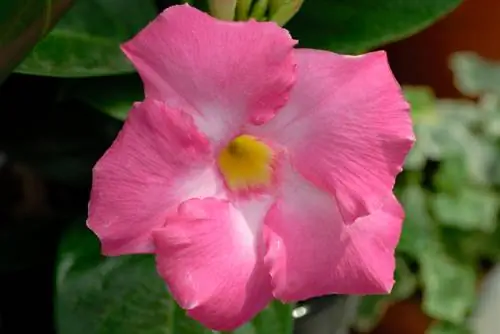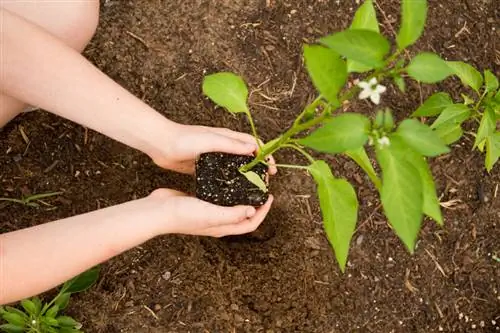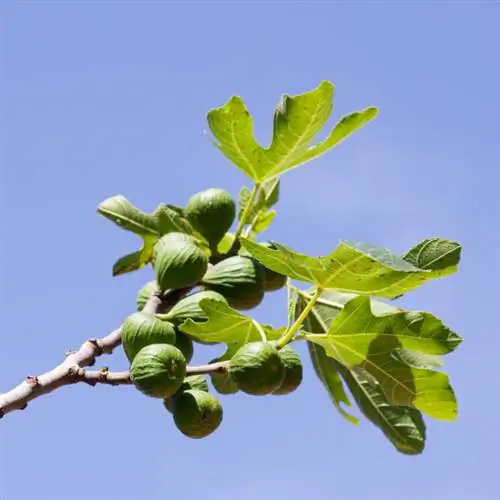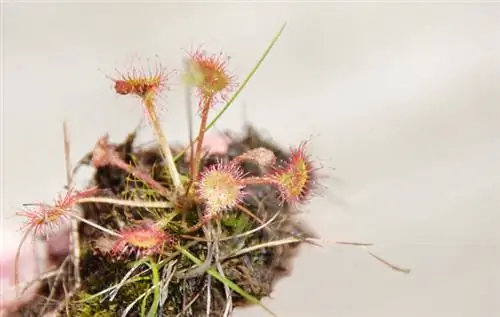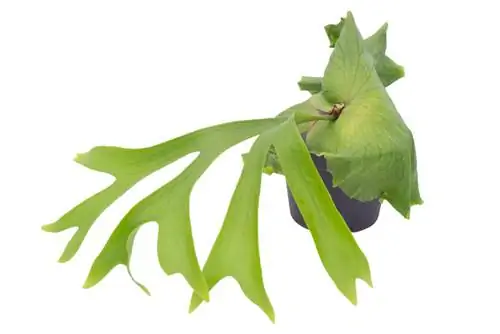- Author admin [email protected].
- Public 2023-12-16 16:46.
- Last modified 2025-01-23 11:20.
Like all potted plants, a Dipladenia in a hanging basket or balcony box needs to be repotted more or less regularly. If the plant becomes too large, it will need a larger planter. Fresh potting soil, however, is needed regularly.

When and how should a Dipladenia be repotted?
A Dipladenia should ideally be repotted in spring. Use a pot with a drainage hole and create a drainage layer of broken clay or pebbles. Mix normal potting soil with a little compost or horn shavings and water the plant a little after repotting.
When should the Dipladenia be repotted?
It is best to repot your Dipladenia in spring, even if it is a houseplant. In this way, your Mandevilla gets lots of nutrients from the fresh soil that it urgently needs during the flowering period. It is enough to use normal potting soil (€6.00 on Amazon).
You should keep this in mind when repotting the Dipladenia
If you want your Dipladenia to grow compactly or just stay relatively small and manageable, then cut back the old shoots when repotting. This means that the Mandevilla sprouts again and stays blooming for a long time. The Dipladenia does not need a particularly large pot. But it should definitely have a drainage hole, because the Dipladenia cannot tolerate waterlogging.
Put a drainage layer made of potsherds or large pebbles in the pot so that excess water can always drain away easily. If available, mix some compost or a handful of horn shavings into the potting soil, this saves you having to add the first fertilizer. Then put the Dipladenia in the pot and water it a little.
The most important things in brief:
- ideally repot in spring
- maybe take this opportunity to cut back straight away
- don't use a pot that is too big with a drainage hole
- Create a drainage layer made of potsherds or pebbles
- use normal potting soil
- possibly mix some compost or horn shavings into the potting soil
- water the repotted plant a little
Tip
Regular repotting keeps your Dipladenia he althy and blooming. Take this opportunity to check the plant immediately for pests or signs of disease.

